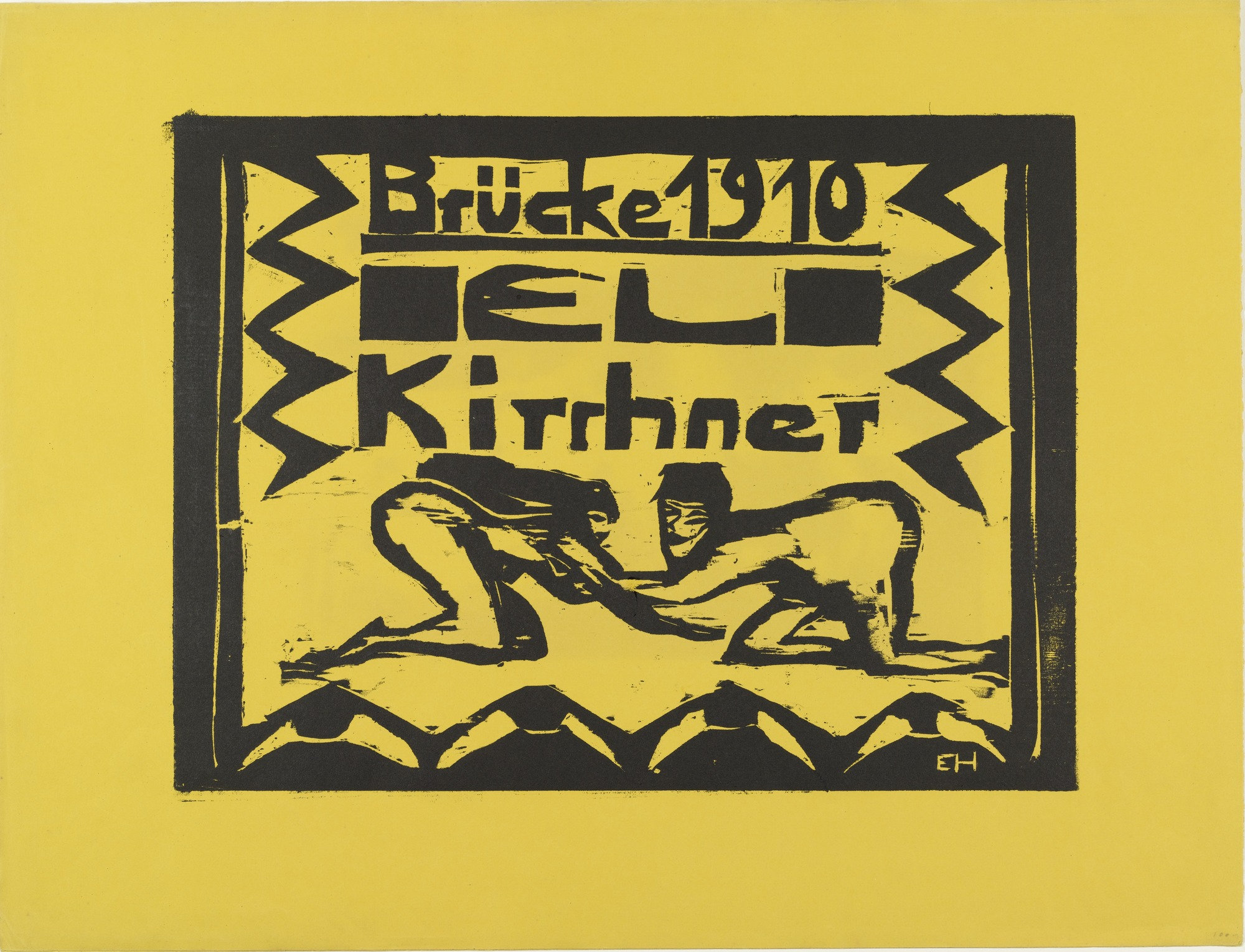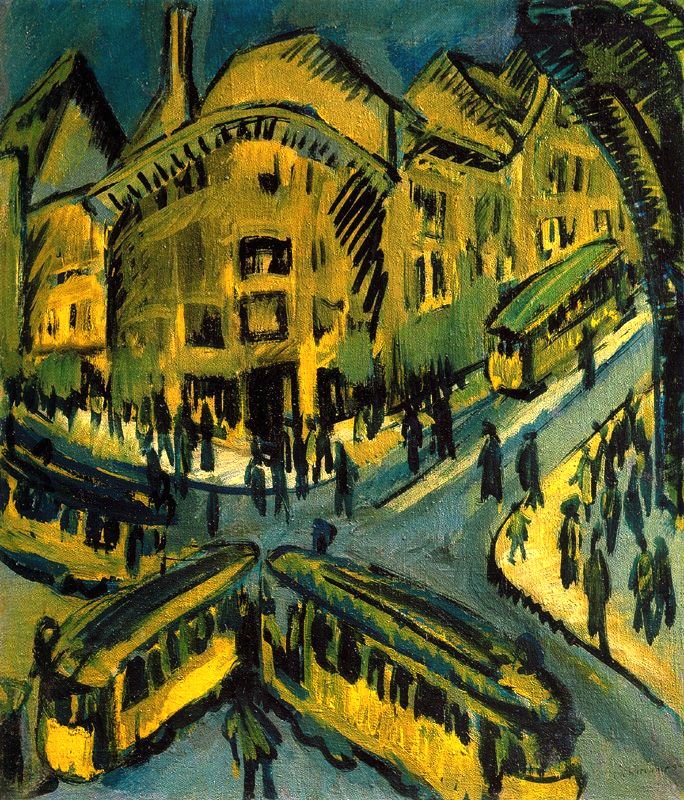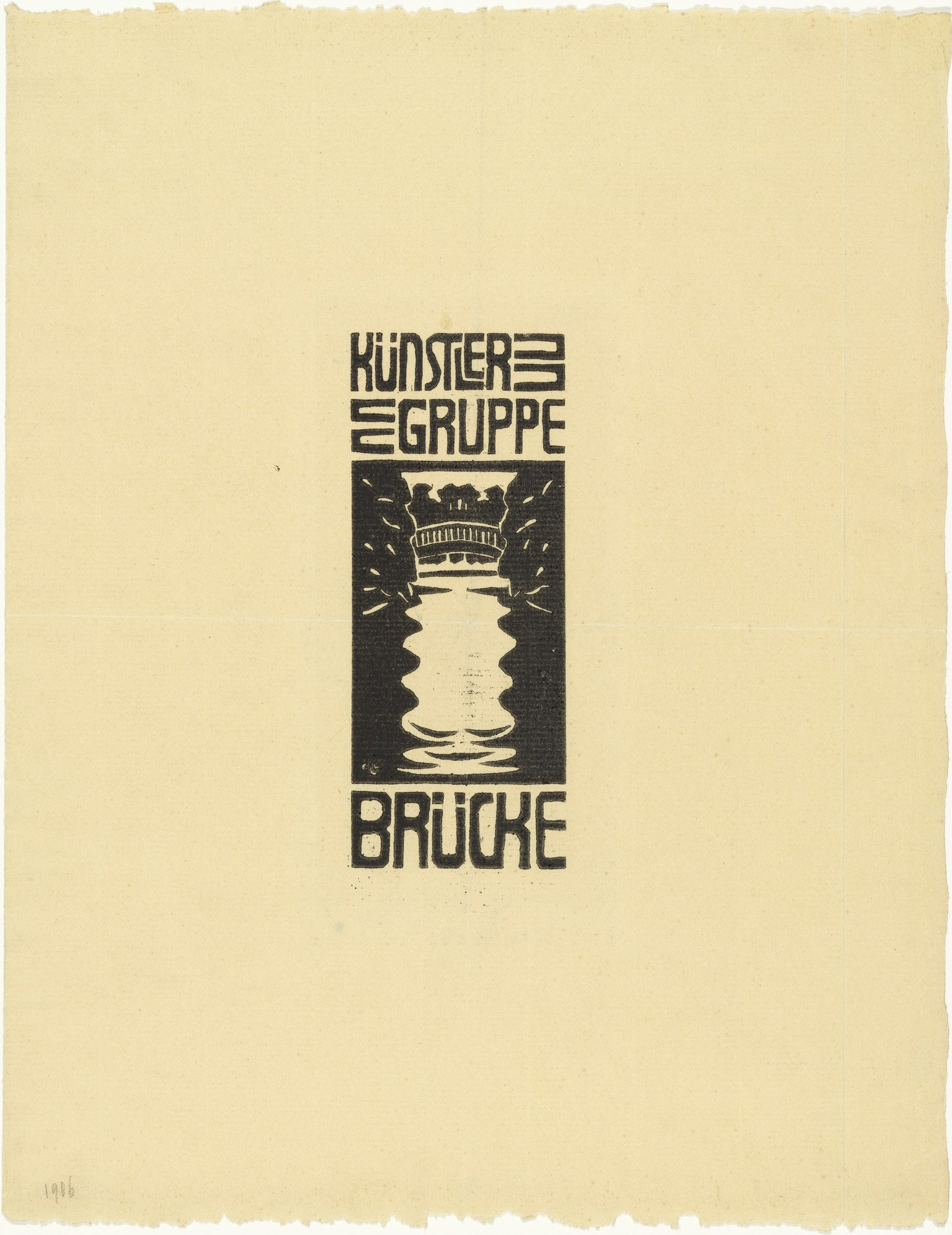
Brücke Basic Art Series New Mags
Ernst Ludwig Kirchner, Manifesto, 1906, woodcut, 28.8 x 22.2 cm, Künstlergruppe Brücke, Dresden.. one labeling him as a part of the Die Brucke group and one calling him the "founding member" This is the line: "Created as an alternative to Kandinsky's previous group, the more conservative Neuen Künstlervereinigung München (New Artists.

BRUCKE Production Video YouTube
Die Brücke (The Bridge) was a group of German expressionist artists formed in Dresden in 1905, after which the Brücke Museum in Berlin was named. Founding members were Fritz Bleyl, Erich Heckel, Ernst Ludwig Kirchner and Karl Schmidt-Rottluff. Later members were Emil Nolde, Max Pechstein and Otto Mueller.

"Die Brucke" by urbanmonk Redbubble
Die Brücke, (German: "The Bridge") organization of German painters and printmakers that from 1905 to 1913 played a pivotal role in the development of Expressionism.

Poster for Die Brücke The Art Institute of Chicago
Die Brücke (The Bridge) was a German Expressionist group based in Dresden, then Berlin, from 1905-1913. The name indicates the influences on their work, with their art viewed as a bridge between the past, present and future. They are noted for their revival of the woodcut print. Ernst Ludwig Kirchner Japanisches Theater [Japanese Theatre] 1909

MoMA The Collection Erich Heckel. Kneeling Nudes (Kniende Akte
The manifesto of 1906 stated 'we want to achieve freedom of life and action against the well established older forces'. In art this freedom involved blending elements of old German art and African and South Pacific tribal art, with post-impressionism and fauvism to create a distinctive modern style.

Die Brücke Illustration, Tapestry, Design
According to their manifesto of 1906, members of Die Brücke stated that their aim was to bring about complete freedom of life and action against the fixed, traditional forces that dictated society. In terms of art that was created, this sought-after freedom encouraged artists to merge elements of traditional German art with African and South.

Chronik K.G. Brücke, (1913) von Ernst Ludwig Kirchner German
Manifesto of the Brücke Artists' Group (Programm der Künstlergruppe Brücke). (1906). One from a set of two woodcuts. composition: 5 15/16 x 2 15/16" (15.1 x 7.5 cm); sheet: 11 5/16 x 8 3/4" (28.8 x 22.2 cm). Künstlergruppe Brücke, Dresden. Ernst Ludwig Kirchner, Dresden. Gift of J. B. Neumann. 479.1941.2.

Brücke Magazin Ausgabe16 by Ugur Khan Issuu
Manifesto of the Brücke artists' group (title vignette), 1906 Blatt (ganzer Bogen) 223 x 348 mm Druckstock 74 x 41 mm Physical Description Woodcut on laid paper Inventory Number SG 3531 Object Number SG 3531 D Acquisition Acquired in 1962 Status Can be presented in the study room of the Graphische Sammlung (special opening hours) Texts
ESPRESSIONISMO
Inspired by the paintings of Van Gogh, Munch, Gauguin and the tribal art they encountered at the Dresden Ethnological Museum, they produced raw, powerful art, which aimed for a new and authentic emotional response to the world. In 1906 the group published its manifesto in the form of a woodcut print, which declared:

Die Brücke
Il manifesto del gruppo "Die Brucke" Nella primavera del 1906, Kirchner scrive un manifesto in caratteri gotici, stampato in xilografia, in cui invita gli artisti a cercare la libertà di lavoro e di vita contro le forze conservatrici.

Épinglé sur La Rue
Choose From a Wide Selection Of Informative and Comprehensive Books For You. Enhance Your Shopping Experience With Our Personalised Recommendations.

Cinque donne per strada , olio su tela, Ernst Ludwig Kirchner, 1913
223 x 348 mm Druckstock 151 x 75 mm Physical Description Woodcut on laid paper Inventory Number SG 3531 Object Number SG 3531V D Acquisition Acquired in 1962 Status Can be presented in the study room of the Graphische Sammlung (special opening hours) Texts About the Work In 1906, Kirchner wrote the Brücke manifesto and cut it in wood.

Manifesto of the Brücke artists’ group (text) Digital Collection
The Brücke ( Bridge ), also Künstlergruppe Brücke or KG Brücke, was a group of German expressionist artists formed in Dresden in 1905. Founding members were Fritz Bleyl, Erich Heckel, Ernst Ludwig Kirchner and Karl Schmidt-Rottluff. Later members were Emil Nolde, Max Pechstein and Otto Mueller.

MoMA The Collection Ernst Ludwig Kirchner. of
Ernst Ludwig Kirchner was a German expressionist painter and printmaker and one of the founders of the artists group Die Brücke or "The Bridge", a key group leading to the foundation of Expressionism in 20th-century art. He volunteered for army service in the First World War, but soon suffered a breakdown and was discharged.

Manifesto "Die Brücke", 1906, xilografia, Ernst Ludwig Kirchner
Die Brücke 1905 - 1913 The Künstlergruppe Brücke was founded on 7 June 1905 in Dresden by four architecture students: They were united by a common aim to break new boundaries in art. They were.

die brucke manifest Google Search Ernst ludwig kirchner, German
We do not want to impress, but want to be understood. The human race, unique in Earth's history, has driven itself onto a rocky precipice and seems poised to cast itself into the dark waters below, or rather to stumble, hands over ears and eyes shut closed, out into a kind of nothingness.